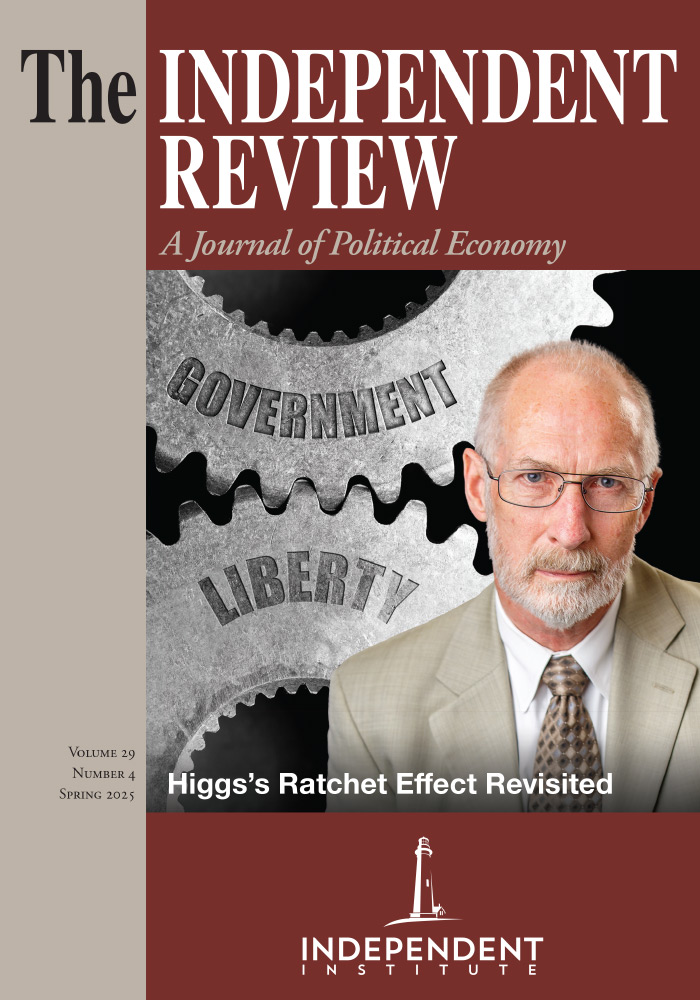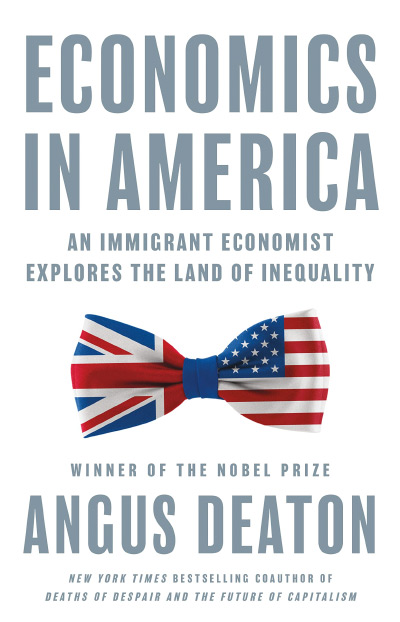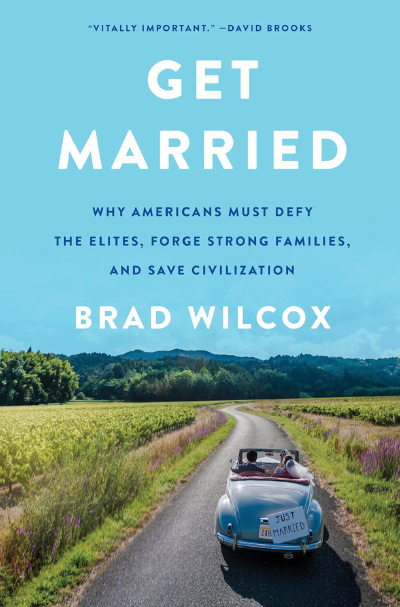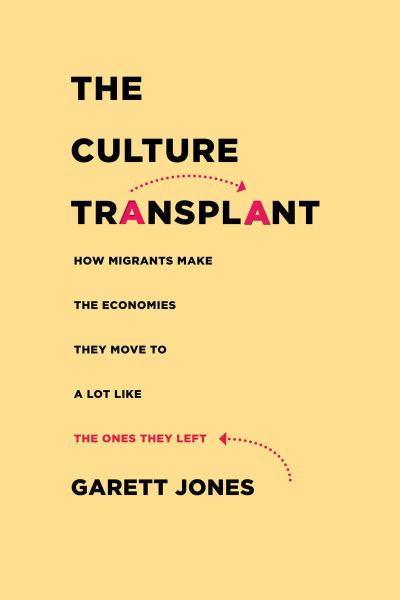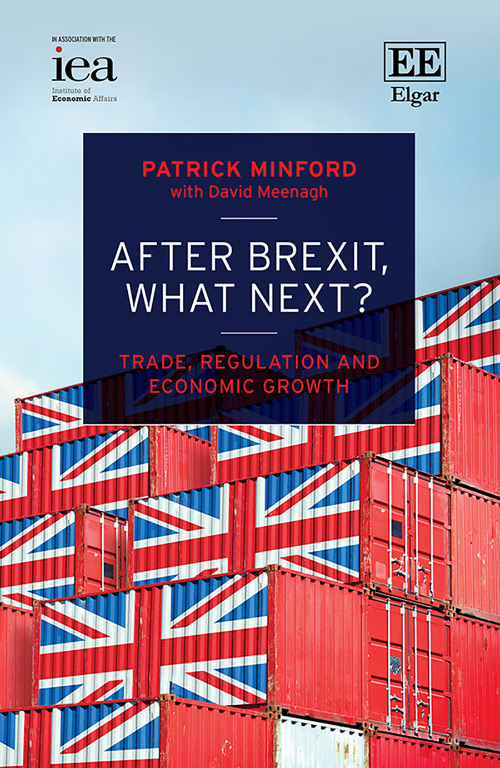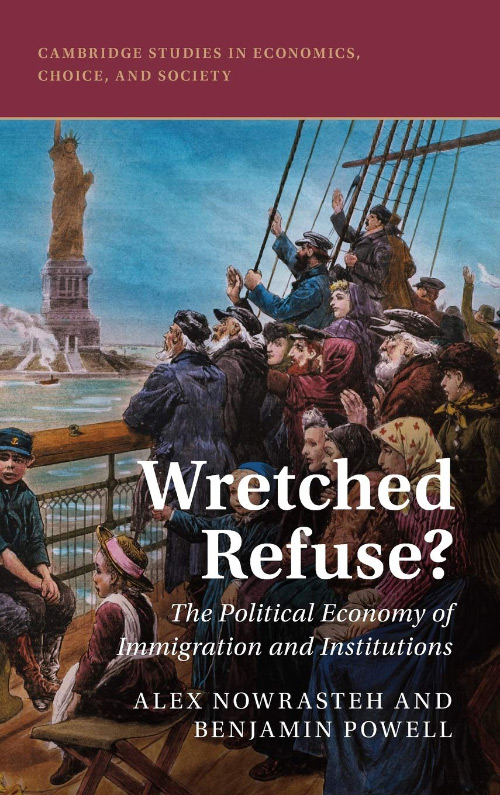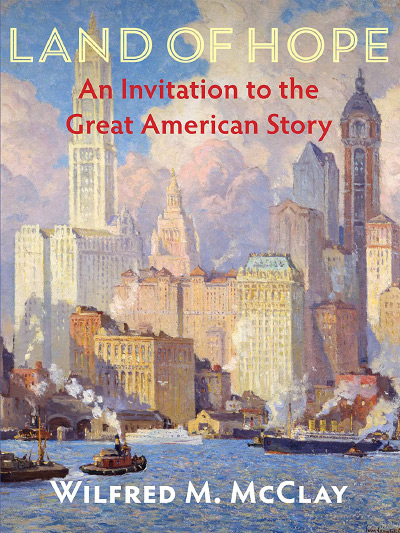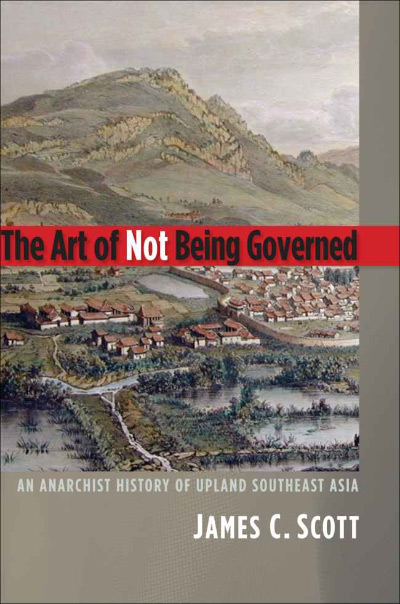Angus Deaton has long been known for offering unique perspectives on complex topics. In his latest book, Economics in America, the winner of the 2015 Nobel Prize in Economics presents himself as a candid truth teller about his own profession and its relationship to his adopted country, the United States. The result is part memoir and part social commentary, though all is told in an autobiographical style that recounts different phases and observations across a lengthy and distinguished academic career.
Deaton divides the text thematically, taking on policy issues such as the minimum wage, health care, and inequality before moving to a critical introspection about academic politics and the state of modern economics. Initially, the text shows promise of deploying an interrogating eye to each theme, including a stated willingness to challenge the orthodoxies of his profession. He hints at his disdain for academic credentialism and anti-intellectualism alike, while presenting himself as a critical observer of each. Instead, and much to my disappointment, the reader finds a book that is mired in the orthodoxies and myopias of an Ivy League faculty worldview.
Several examples from Deaton’s text illustrate this tendency. He opens his book with a discussion of minimum wage policy, as recounted through his own impressions of the American fast-food industry. Deaton recounts David Card and Alan Krueger’s famous study (1994, “Minimum Wages and Employment: A Case Study of the Fast-Food Industry in New Jersey and Pennsylvania,” American Economic Review 84, no. 4, 772–93), in which they surveyed New Jersey fast-food restaurant workers in the wake of a minimum wage hike and found no evidence of disemployment effects. Card and Krueger’s analysis is commended today for its innovative research strategy (they used a comparative analysis of restaurants across the border in Pennsylvania, which did not hike its minimum wage, to test a natural experiment). Their findings are only part of a complex and growing scholarly literature though—indeed, numerous subsequent studies have found clear evidence of disemployment from minimum wage hikes across state borders. (See, for example, Jeffrey Clemens and Michael Wither, 2019, “The Minimum Wage and the Great Recession: Evidence of Effects on the Employment and Income Trajectories of Low-Skilled Workers,” Journal of Public Economics 170:53–67; and Priyaranjan Jha, David Neumark, and Antonio Rodriguez-Lopez, 2022, “What’s across the Border? Re-evaluating the Cross-Border Evidence on Minimum Wage Effects,” forthcoming, Journal of Political Economy—Microeconomics.)
A scholarly history of the minimum wage debate after Card and Krueger’s now thirty-year-old paper might begin by summarizing the challenges to their original survey instrument and progress through attempts to replicate its approach elsewhere, including failures. It would investigate improved empirical techniques for comparing policy changes across state borders and it would incorporate findings that both support and challenge Card and Krueger’s results. Instead, Deaton treats Card and Krueger as an authoritative answer, while dismissing their many critics with little more than a handwave and an insult. The pushback against Card and Krueger, according to Deaton, can only be explained as “anti-intellectualism” and evidence of “what happens when research challenges vested interests and triggers hardball politics” (p. 2). Critics of Card and Krueger, such as the economist David Neumark, are dismissed out of hand as having been “funded by business groups.” Others such as Finis Welch and James M. Buchanan are dismissed as ideologically motivated enforcers of price theory dogma.
Deaton’s own summary of the post–Card and Krueger literature is partial to cherry-picked studies that support its pro-minimum-wage findings. At the same time that he denounces its critics as political actors, he glosses past its political uses to lobby for minimum wage legislation. For example, Clinton administration labor secretary Robert Reich grossly exaggerated Card and Krueger’s results in statements and congressional testimony, even suggesting that a national minimum wage hike would have dramatic pro-employment effects. Yet only skeptics of this position are treated as political and deserving of scorn, even if they’ve constructively engaged with the pro-minimum-wage literature and found it wanting. In no small irony then, Deaton’s assessment of the minimum wage debate displays the very same brand of anti-intellectualism that he carelessly projects onto the other side.
We find similar habits at play when Deaton turns his attention to economic inequality, a subject closer to his own research. His investigation of this subject is littered with throwaway tropes about “Chicago economics,” “market fundamentalism,” and derisive asides about the alleged effects of “neoliberalism”—an amorphous pejorative concept that he does not (and probably could not) coherently define. (On the conceptual deficiencies of neoliberalism as a term, see Taylor C. Boas and Jordan Gans-Morse, 2009, “Neoliberalism: From New Liberal Philosophy to Anti-liberal Slogan,” Studies in Comparative International Development 44, no. 2: 137–61; and Phillip W. Magness, 2021, “Coining Neoliberalism: Interwar Germany and the Neglected Origins of a Pejorative Moniker,” Journal of Contextual Economics–Schmollers Jahrbuch 3:189–214.) Deaton ascribes an intentional avoidance of inequality to the “Chicago view,” writing that “for many years, income inequality was little discussed in the United States” (p. 97). In Deaton’s telling, inequality was rediscovered only after Thomas Piketty and Emmanuel Saez turned their attention to measuring income concentration in the early 2000s. This is an odd claim that has percolated on the far left of academia in recent years, yet it is contradicted by even a cursory survey of the inequality literature. Significant pre-Piketty works on inequality in the United States include measurement studies dating back to the midcentury research of Nobel Prize winner Simon Kuznets; a multitude of books and articles in top journals by Peter Lindert and Jeffrey Williamson; historical studies by Lee Soltow, Gene Smiley, and the team of Robert Margo and Claudia Goldin; survey studies of wealth concentration by Richard Wolff and Arthur Kennickell; and income distribution measures by Daniel Feenberg and James Poterba, also published in a top economics journal.
Turning to Piketty and Saez, Deaton credulously repeats their story of a centurylong U curve where high tax rates allegedly suppressed income concentration at the top and Reagan-era tax cuts brought it roaring back. He evinces no awareness of the many recent works that challenge these findings and dampen the magnitude of the U curve. The closest Deaton comes is asking “whether the exclusion of taxes and transfers” from the Piketty measurements “is not exaggerating inequality (yes) or reversing the trend (no)” (p. 100). He stops short of investigating this question, even though it is directly pertinent to his broader depiction of the United States as a land of extreme inequality on account of allegedly lax antipoverty policies. Piketty and Saez, as well as their successor studies with Gabriel Zucman, tend to present inequality through measures of pretax and pre-transfer-income concentrations. A recent study by Gerald Auten and David Splinter (2024, “Income Inequality in the United States: Using Tax Data to Measure Long-Term Trends,” Journal of Political Economy 132, no. 7: 2179–227) shows that the alleged post-1980s rise in inequality largely dissipates when you include the redistributive effects of taxes and transfer payments. The alleged march toward a second Gilded Age appears to have been blunted since at least the 1960s, provided one takes into account the effects of the tax system on take-home pay.
Deaton’s shift in focus toward critically examining the academic side of economics is at once his most promising and yet most disappointing foray in the book. He begins by scrutinizing the tendencies of the profession, including its precarious interplay with politics and business cycles, its predictive failures in recessions and other economic crises, and its prestige biases toward top journals, elite departments, and distinguished prizes.
Unfortunately, Deaton’s diagnosis of the university system is informed by credulous acceptance of myths, most of which are promoted by higher ed labor activists who seek more public funding of universities. At one point he decries the “substantial cuts after the [2008 financial] crisis, especially in support staff” (p. 153). He similarly charges that universities have accelerated “the gradual replacement of tenured faculty by ‘adjuncts,’” repeating a common talking point that this part-time labor force provides “more than two-thirds of university teaching” (p. 153). Both claims are in error. The U.S. Department of Education reports that university administrative staff grew from 1.86 million in 2007 to 1.97 million today. Adjunct or part-time faculty employment peaked at 762,000 nationwide in 2011, matching an equal number of full-time faculty. In the decade since, adjuncts have declined to 665,000, while fulltime professors grew to 842,000 (Digest of Education Statistics, https://nces.ed.gov/programs/digest/).
Deaton’s look at the economics profession begins a refreshing and critical assessment, noting its historical skeletons such as the American Economics Association’s connections to Progressive Era eugenics and recent attempts to atone for this legacy. He questions the field’s overreliance on prestige gained through top journals and conferences, noting that some of the most interesting work in the profession occurs outside these venues. He also laments the penchant of economists for their “aggressive seminar style” (p. 175), and for denigrating each other’s works with insult and derision. Here Deaton is at his introspective best, calling his colleagues to task for a culture that has often damaged its ability to pursue loftier social-scientific goals.
Unfortunately, Deaton does not follow his own advice. In a subsequent chapter he launches into a tirade against the economist Robert Barro for the latter’s skeptical take on the claimed multiplier effects of Keynesian stimulus spending. To Deaton, Barro’s “insanity is an embarrassment, and the fact that Barro is taken seriously—and is a professor at Harvard, rather than a fringe blogger” (p. 215) is indicative of an intellectual “regress[ion]” in macroeconomics. Despite having just penned an eloquent critique of the insult-laden seminar culture in the economics profession, Deaton appears to have absorbed that same seminar culture’s style and incorporated it into his own writing.
This is not the only moment where Deaton falls short of his own introspection for others. In another passage he laments that the creation of the Nobel Prize in Economics has “give[n] (some) laureates a public platform that is only occasionally open to other laureates” (p. 199), mainly in the form of being able to influence politics. It’s a valid criticism in an age when certain recipients of the prize begin second careers as political commentators and editorial writers. He singles out Friedrich Hayek as the “most famous example” of this tendency. “His Nobel Prize in 1974 resurrected him, intellectually if not literally, and made him famous, giving his work renewed influence with many, including, most famously, Margaret Thatcher” (p. 199).
Hayek makes for an odd charge and choice. His favored medium was the lengthy philosophical treatise, not an opinion piece in the New York Times. Thatcher also encountered Hayek long before the 1974 Nobel propelled him to fame, having read his 1944 book, The Road to Serfdom, several decades prior. A curious ideological unevenness afflicts Deaton’s criticisms. It seems obvious that Deaton’s charges about Hayek apply in even more pertinent ways to Paul Krugman and Joseph E. Stiglitz, both of whom parlayed their respective Nobels into punditry and opinion writing on the political left. Yet Deaton makes no such attack and instead reiterates his friendship and respect for both.
In the end, it is difficult for Deaton to advance his critiques of the profession, of academia, and of America’s intellectual climate when he does not hold himself to the same standards. He denounces “insults” and “anti-intellectualism,” then engages in the same. He emphasizes the need to follow evidence over political priors, then adopts political positions at the expense of evidence. He laments academic elitism, and then invokes it to settle scores on complex and contested economic debates. This pattern of asymmetry becomes a recurring weakness of the manuscript. At several places in the book, Deaton arrives at the precipice of an insight only to retreat into the myopic echo chamber of the Princeton faculty lounge.
| Other Independent Review articles by Phillip W. Magness | ||
| Fall 2023 | Radical Hope: A Teaching Manifesto | |
| Winter 2022/23 | The Hyperpoliticization of Higher Ed: Trends in Faculty Political Ideology, 1969–Present | |
| Spring 2022 | “The Danger of Deplorable Reactions”: W. H. Hutt on Liberalism, Populism, and the Constitutional Political Economy of Racism | |
| [View All (8)] | ||

